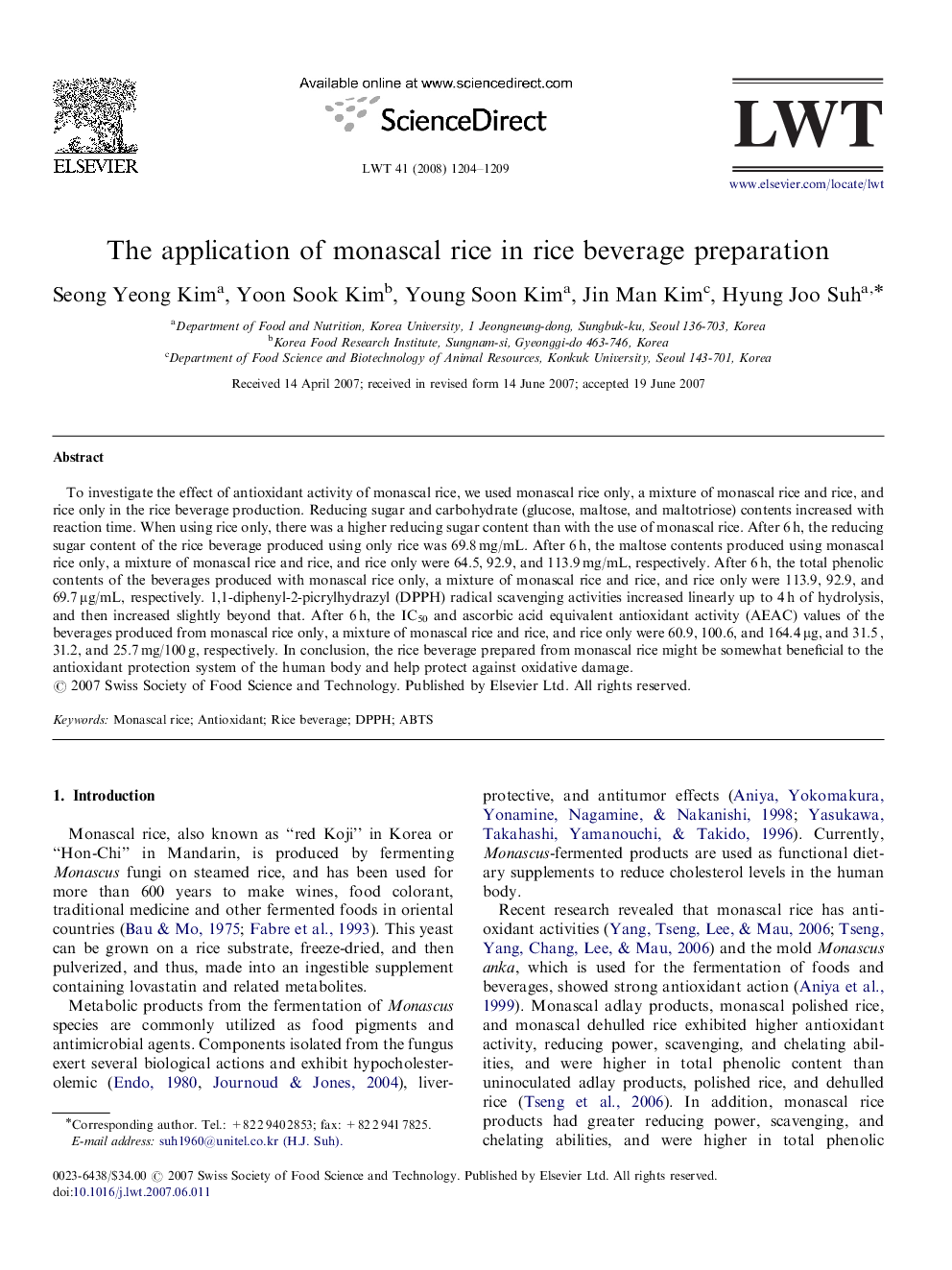| Article ID | Journal | Published Year | Pages | File Type |
|---|---|---|---|---|
| 4565176 | LWT - Food Science and Technology | 2008 | 6 Pages |
To investigate the effect of antioxidant activity of monascal rice, we used monascal rice only, a mixture of monascal rice and rice, and rice only in the rice beverage production. Reducing sugar and carbohydrate (glucose, maltose, and maltotriose) contents increased with reaction time. When using rice only, there was a higher reducing sugar content than with the use of monascal rice. After 6 h, the reducing sugar content of the rice beverage produced using only rice was 69.8 mg/mL. After 6 h, the maltose contents produced using monascal rice only, a mixture of monascal rice and rice, and rice only were 64.5, 92.9, and 113.9 mg/mL, respectively. After 6 h, the total phenolic contents of the beverages produced with monascal rice only, a mixture of monascal rice and rice, and rice only were 113.9, 92.9, and 69.7 μg/mL, respectively. 1,1-diphenyl-2-picrylhydrazyl (DPPH) radical scavenging activities increased linearly up to 4 h of hydrolysis, and then increased slightly beyond that. After 6 h, the IC50 and ascorbic acid equivalent antioxidant activity (AEAC) values of the beverages produced from monascal rice only, a mixture of monascal rice and rice, and rice only were 60.9, 100.6, and 164.4 μg, and 31.5 , 31.2, and 25.7 mg/100 g, respectively. In conclusion, the rice beverage prepared from monascal rice might be somewhat beneficial to the antioxidant protection system of the human body and help protect against oxidative damage.
